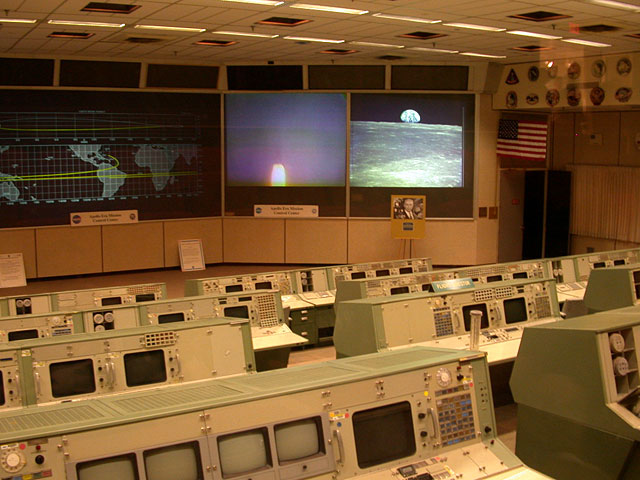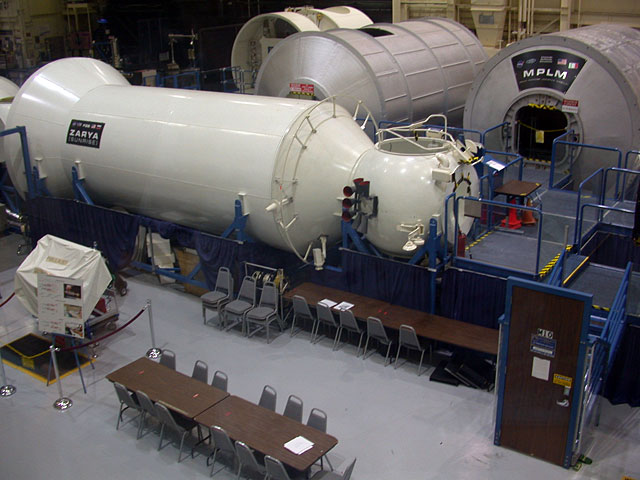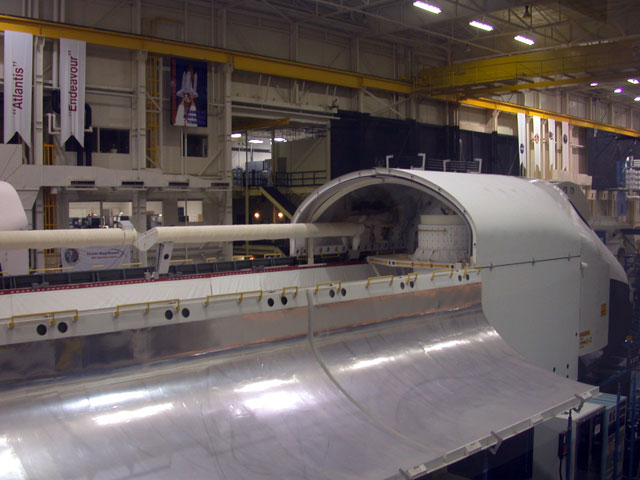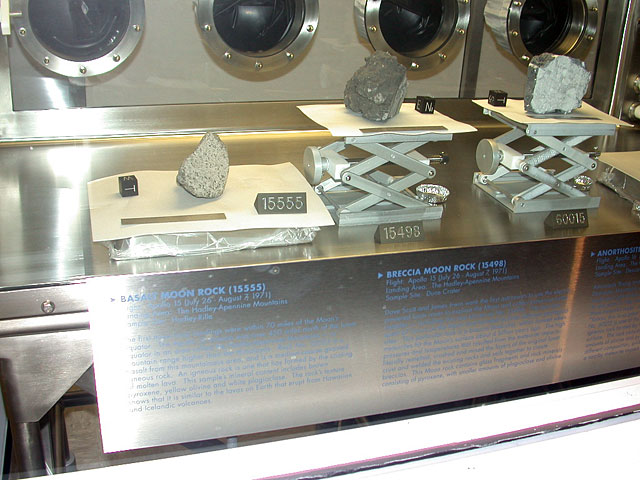|
Mercury Capsule
Close-Up
by
Jim Penhale
|
 |
|
Mercury Capsule |

HyperScale is
proudly supported by Squadron.com
Houston: a sprawling city in southern Texas, located a short
distance from the coast of the Gulf of Mexico. It is an active,
vibrant, bustling metropolis home to roughly 4 million people or so.
It's also the center of a very busy petrochemical refining and
manufacturing region which stretches around the Gulf Coast from
Corpus Christi to the Southwest well past Houston, through Beaumont
and Port Arthur, and into Louisiana. Anyone who has ever worked in
the oil refining or petrochemical industries, or for a company that
supports these industries, has probably been to Houston.
However, there's more to Houston than just oil and gas and great
Tex-Mex food.. Located in the southern part of Houston, butting up
against neighbouring communities such as Nassau Bay and Clear Lake,
lies the Johnson Space Center, home of NASA's Manned Spaceflight
Operations. It is in Houston that US astronauts live and train, and
where Mission Control is located. As a resident of this great city I
was fortunate enough to see NASA T-38s coming in over our house many
times, bringing astronauts back to Ellington Field from training
exercises and proficiency flights.
Located next to the JSC on NASA Road 1 is "Space Center Houston",
the visitor center for the JSC. Here you can spend literally hours
watching films, touring the JSC itself, and looking at exhibits and
displays relating to manned spaceflight such as hardware used on
actual missions, moon rocks, astronaut space suits, and many other
items. I believe it is one of Houston's top attractions and if you
go there prepare to spend lots of time to take it all in. You won't
be disappointed. And if you have children with you prepare to spend
even longer. There are scientific games and things for the kids to
do and see. It's a great place to go.
One of the many displays Space Center Houston has is the Mercury
Capsule, Faith 7, that L. Gordon Cooper flew in earth orbit in May
of 1963. This was the last of the Mercury flights, and Cooper spent
a little over 34 hours in orbit during his flight. The Mercury
flights paved the way for the more advanced two-man Gemini series
where such activities as space walks (or "EVA", for "extra-vehicular
activity) and rendezvous and docking were tried and perfected. These
skills were essential if the US was to send men to land on the moon.
When the MRC/ Atomic City 1/12th scale Mercury capsule was recently
released, I knew I had to have one. So much so that I bought two of
them! It's a beautiful kit, and at 1/12th scale it's big too! It has
a nicely sculpted astronaut figure, and I for one am really hoping
that they follow it up with a Gemini capsule and an Apollo command
module as well.
Knowing that there was an actual Mercury capsule located not a 15
minute drive from where I lived, I contacted Space Center Houston
and asked if I could get in there to photograph it to provide
modellers around with the world with a "walk around". The folks at
Space Center Houston graciously agreed to help me out, and I was
granted access one morning before the center opened to the public so
I could get in and photograph the capsule. The photographs are
contained herein.
A few comments on the photographs:
-
The capsule is actually suspended
from the ceiling in one of the displays, so it's more or less
"upside down" from what one might expect. As it's roughly 5 or 6
feet off the floor I was standing there shooting up into the
capsule, so some of the photographs may have a slightly
different perspective than you might imagine. One useful hint is
that in many of the pictures there are sections of the mannequin
present that can help you determine the orientation of the items
you're looking at.
-
I'm not sure whether or not the
suit on the mannequin is one actually used on a space flight or
not. It looks very similar to ones seen on photographs but I
can't state for certain any more about it than that.
-
There is no hatch with this
capsule, unfortunately, so there is no detail to show inside the
hatch itself.
-
As the exhibit hall where this
capsule is displayed is darkened there is a small yellow light
inside the capsule to provide illumination and provide
"atmosphere". I'm fairly certain that the flash on the camera
overpowered the light, and the yellowish cast it gave off did
not affect colours captured by the camera. I downloaded them
very shortly after taking them and was satisfied that the
colours as I saw them on my monitor were correct.
-
The heat shield has been cutaway
to show the internal construction of the capsule.
My sincere thanks to Paul Spana and the folks at Space Center
Houston (
http://www.spacecenter.org )
Bonus photos!
DSCN 4101: Historic Mission Control. This is the actual Mission
Control Center used from the beginning of the Space program right
through Apollo and Skylab and, I believe, for the first couple of
Space Shuttle missions. The current Mission Control is in the same
building, but in an undisclosed location.

DSCN 4120: This is an lifting body vehicle which is located in
"Hangar X" at the JSC. I would estimate it is maybe 30 to 40 feet
long (9 m to 12 m).

DSCN 4123: These are full sized module mock-ups for the
International Space Station. These are used at the JSC for training
astronauts in module assembly, as well as for fitting in equipment,
ISS EVAs, etc

DSCN 4137: This is the Space Shuttle Full Fuselage Trainer, or
FFT. It is used for training astronauts in emergency escape
procedures as well as working with equipment in the cargo bay

DSCN 4163: These are actual moon rocks on display. They are
sealed and can't be touched, but are nevertheless very interesting
to look at.

JSC-13: This is the third stage of a Saturn V rocket on display.
At the time this photo was taken (summer 2002) the rocket was
outdoors and exposed to the elements. However, a building has since
been built around it so it can be restored.

Lastly, if in Houston be sure to slip down the highway a few
miles to the Lone Star Flight Museum in Galveston. They have a
tremendous collection of aircraft, many of which they take out and
fly a couple of times a year! www.lsfm.org
|
Mercury
Capsule
Close-Up Images |
Click the thumbnails below
to view larger images:
Images Copyright © 2005
by Jim Penhale
Page
Created 16 March 2005
Last updated
15 March 2005
Back to HyperScale Main
Page
Back to Features
Page
|
Home |
What's New |
Features |
Gallery |
Reviews |
Reference |
Forum |
Search